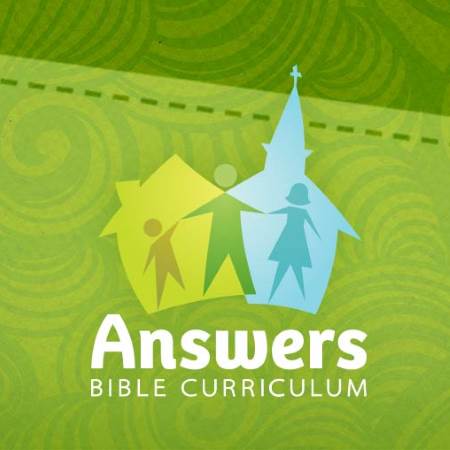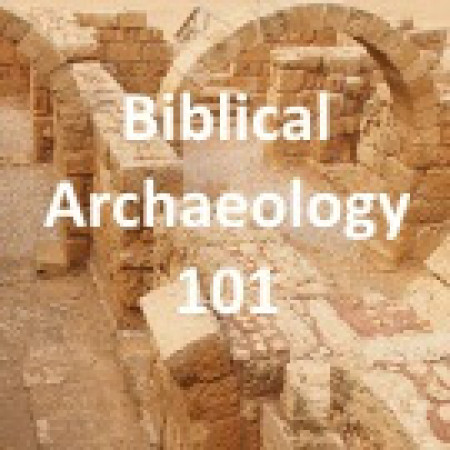In this sermon, David Capoccia examines Jesus’ teaching on worry in the Sermon on the Mount. David Capoccia explains two commands from Jesus regarding worry, two comforting metaphors from Jesus’ illustrating the believer’s relationship to God, and seven reasons from Jesus as to why Christians should not worry.
Sermons & Sunday Schools
Sermons/Sunday Schools by David Capoccia: (Page 39)
The Exodus from Egypt
- Speaker: David Capoccia
- Series: Answers Bible Curriculum, First Edition
- Text: Selected Scriptures
- Topics: Faith/Trusting God, Fear & Anxiety, God's Sovereignty & Power
- Downloads: mp3
In this lesson, we examine the departure of the people of Israel from Egypt, God’s deliverance at the Red Sea, and the complaints of the people in the desert. God was teaching something to Israel in each of these circumstances, and the lessons that Israel needed to learn are the same lessons that believers need to…
Plagues and the Passover
- Speaker: David Capoccia
- Series: Answers Bible Curriculum, First Edition
- Text: Selected Scriptures
- Topics: God's Sovereignty & Power, Hell & God's Judgment, Salvation & The Gospel
- Downloads: mp3
In this lesson, we look at God’s ten plagues of judgment on Egypt, paying special attention to how the judgments targeted the gods of Egypt and how the Passover celebration connects to Jesus Christ.
God Calls Moses
- Speaker: David Capoccia
- Series: Answers Bible Curriculum, First Edition
- Text: 3:1-22, Exodus 2:1-10
- Topics: Faith/Trusting God, God's Sovereignty & Power
- Downloads: mp3
In this lesson, we look at Exodus 2-4 and how God raises up Moses to lead Israel out of Egypt. In our study, we notice that Moses’ expected method of deliverance does not turn out to be God’s method. We therefore consider application for ourselves; do we sometimes find ourselves disappointed, discouraged, and depressed when God keeps…
Chronology Conundrums
- Speaker: David Capoccia
- Series: Answers Bible Curriculum, First Edition
- Text: Selected Scriptures
- Topics: Apologetics, God's Sovereignty & Power
- Downloads: mp3
Does ancient Egyptian history contradict the Bible? In this lesson, we investigate why the standard Egyptian chronology of history does not match the chronology given by the Bible. Specifically, we familiarize ourselves with the conventional chronology of ancient Egyptian history, consider the revised chronology proposed by Answers in Genesis and archaeologist David Down, and compare this chronology to the one asserted…
Bondage in Egypt
- Speaker: David Capoccia
- Series: Answers Bible Curriculum, First Edition
- Text: Exodus 1:1-22
- Topics: Apologetics, Faith/Trusting God, God's Sovereignty & Power
- Downloads: mp3
In this lesson, we examine Exodus 1 and the account of enslavement of the children of Israel. This account raises a number of questions: where was God during the suffering of the Israelites? When and for how long were the Israelites enslaved? Did God condone the lying of the Hebrew midwives to pharaoh? We investigate these…
Joseph’s Early Life
- Speaker: David Capoccia
- Series: Answers Bible Curriculum, First Edition
- Text: Genesis 37:1-36
- Topics: Faith/Trusting God, God's Sovereignty & Power
- Downloads: mp3
In this lesson, we examine how God sovereignly arranged circumstances in Joseph’s early life to bring Joseph to Potiphar’s household in Egypt. We also ask what we can learn from this account in Genesis for our own lives, that is, how we can trust in God’s good plans when it looks like God’s promises are being…
Jacob’s Ladder
- Speaker: David Capoccia
- Series: Answers Bible Curriculum, First Edition
- Text: Genesis 25:19-28, Genesis 28:10-22
- Topics: Faith/Trusting God, God's Sovereignty & Power, Jesus Christ
- Downloads: mp3
In this lesson, we examine how God sovereignly chose and sovereignly provided for Jacob. We also examine Jacob’s vision of a heavenly staircase and how that vision connects with Jesus Christ.
Isaac and Rebekah
- Speaker: David Capoccia
- Series: Answers Bible Curriculum, First Edition
- Text: Genesis 24:1-67
- Topics: Faith/Trusting God, God's Sovereignty & Power, Marriage
- Downloads: mp3
In this Sunday school lesson, we investigate the account of Abraham’s servant acquiring Rebekah as a wife for Isaac in Genesis 24. As we observe, interpret, and apply this passage, we specifically consider how God demonstrated covenant kindness to Abraham and what that covenant kindness means for believers today.
Archaeology of Israel’s Exile and Return (Part 2)
- Speaker: David Capoccia
- Series: Biblical Archaeology 101
- Text: Selected Scriptures
- Topics: Apologetics, Biblical Archaeology
- Downloads: mp3
In this final lesson of the biblical archaeology survey, David Capoccia answers questions about Patterns of Evidence: Exodus, discusses the importance of seal impressions for confirming biblical persons archaeologically, and presents archaeological findings related to Nebuchadnezzar II, Belshazzar, and Cyrus the Great.



